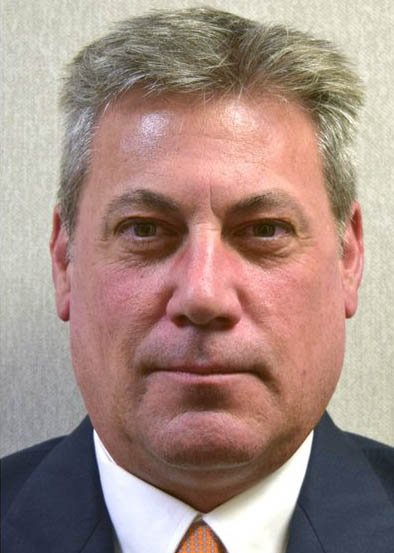Verne Lundquist, who has sat behind the microphone at Augusta National for 40 years, including the past 25 on the par-3 16th hole, is not the only icon retiring after this year's Masters Tournament. After parts of five decades overseeing conditions at the world's most famous golf course, Brad Owen is calling it quits this year.
 Owen (right), who has worked at Augusta National Golf Club for 37 years, including the past 27 as superintendent, is retiring, according to a statement by club chairman Fred Ridley. His retirement will be effective later this year.
Owen (right), who has worked at Augusta National Golf Club for 37 years, including the past 27 as superintendent, is retiring, according to a statement by club chairman Fred Ridley. His retirement will be effective later this year.
His achievements and dedication to Augusta National and the Masters Tournament were acknowledged by Ridley four minutes into a 40-minute pre-tournament news conference on April 10 that also recognized the contributions of Lundquist and former Masters champion Jack Burke.
"As you may have seen the past few days, the Augusta National golf course and grounds are again in exceptional condition. This is a credit to every member of our agronomy and horticulture teams whose passion and dedication are unmatched," Ridley said in the news conference. "It also is a tribute to Brad Owen, our senior director of agronomy who is retiring this fall 37 years after his arrival at Augusta.
"I want to thank him for always finding a way to elevate and enhance the natural beauty of Augusta National."
A 1987 graduate of the Penn State two-year program, Owen earned a bachelor's degree in business from Appalachian State University in 1986 in his native North Carolina. His Augusta career began immediately after he graduated from Penn State, starting as an irrigation tech in 1987. He was named senior assistant superintendent in 1989, a position he held for eight years before being named director of golf course maintenance in 1997. He held that title for 25 years until he was promoted to senior director of agronomy in 2022 when Marsh Benson retired.
There have been two constants at Augusta National throughout its 90-year history — conditions that sometimes have been the bane of other superintendents (what other course has a "syndrome" named after it?) and architectural changes to the golf course that began in earnest immediately after the inaugural Masters Tournament in 1934.
As you may have seen the past few days, the Augusta National golf course and grounds are again in exceptional condition. This is a credit to every member of our agronomy and horticulture teams whose passion and dedication are unmatched. It also is a tribute to Brad Owen, our senior director of agronomy who is retiring this fall 37 years after his arrival at Augusta. . . . I want to thank him for always finding a way to elevate and enhance the natural beauty of Augusta National.
According to club records, Owen has been the superintendent at Augusta National longer than any of his predecessors. During his tenure, he has seen some of the most dramatic changes in the club's quest to keep pace with stick and ball technology and a generation of long hitters that threaten to render the longest and most difficult courses irrelevant.
Just this year, the back tee on No. 2 was moved back another 10 yards, stretching the par 5 to 585 yards. In 2023, the par-5 13th hole was lengthened by 35 yards, and a handful of holes were renovated the year before.
"As we state every year, we're bound to a tradition of constant improvement," Ridley said in the news conference. "We maintain Mr. (Clifford) Roberts' philosophy that nothing stands still. We have committed to always move forward and we always will strive to do it in a manner that serves the competitors in the Masters, our patrons, consumers of our content, and the game of golf as a whole."
Yearly changes to the course have been almost a regular occurrence as the club strives to remain challenging for today's players while retaining some of the intent put into the ground by Alister MacKenzie and Bobby Jones as well as the philosophy of Roberts, who, along with Jones, founded the club. Today, the course stretches to 7,545 yards, making it the third-longest course on this year's PGA Tour schedule behind the South Course at Torrey Pines (7,765 yards) and the Plantation Course at Kapalua (7,596).
"As has been reported, last summer, the fifth tee was moved back and shifted away from the fourth green. In doing so, the fairway landing area was regraded and the bunkers were repositioned," Ridley said in the news conference. "While this hole now measures 40 yards longer, we believe this change maintains the original design philosophy of Bobby Jones and Alister MacKenzie, and not only continues our commitment to keep the course in step with the changing state of the game, but we believe it will have a positive impact on pace of play."
A multi-year nominee for the TurfNet Superintendent of the Year award, Owen was named Superintendent of the Year by the Georgia GCSA in 2020.


